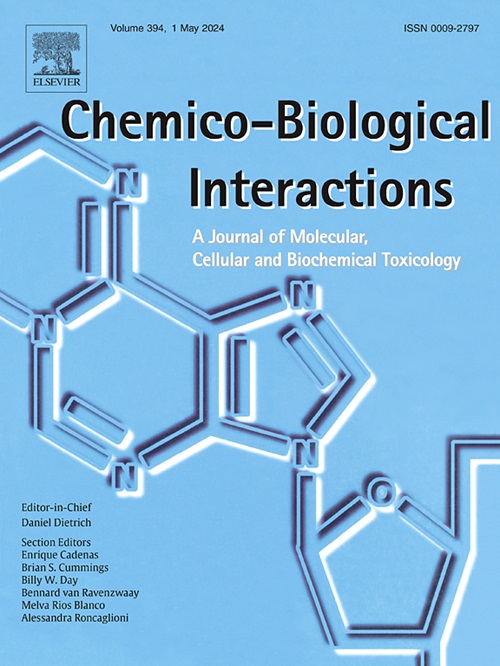抑制蛋白二硫异构酶可通过降低细胞氧化应激抑制破骨细胞的活性,从而减轻类固醇诱发的股骨头坏死。
IF 4.7
2区 医学
Q1 BIOCHEMISTRY & MOLECULAR BIOLOGY
引用次数: 0
摘要
股骨头骨坏死(ONFH)是一种破坏性和不可逆的髋关节疾病,通常与临床应用大剂量或长期糖皮质激素(GCs)导致的氧化应激增加有关。以往的研究表明,蛋白二硫异构酶(PDI)在调节细胞产生活性氧(ROS)方面发挥着关键作用。因此,我们想知道干扰 PDI 是否会影响 GCs 刺激的破骨细胞生成。为了验证这一假设,我们根据多个数据库对类固醇诱导的股骨头坏死(SIONFH)的潜在基因靶点进行了生物信息学和网络分析,同时通过地塞米松(DEX)刺激破骨细胞生成的体外模型验证了相关的生物效应。结果发现了 70 个潜在的 SIONFH 干预基因靶点,其中包括编码 PDI 的 P4HB 基因。基于网络拓扑分析技术(NTA)、蛋白-蛋白相互作用(PPI)网络和小鼠细胞图谱数据库的进一步分析确定了PDI在ONFH过程中调节破骨细胞细胞氧化还原状态的重要性。Western印迹(WB)验证也表明,PDI可能是DEX刺激破骨细胞生成过程中的一个正向调节因子。因此,研究人员将多种 PDI 抑制剂与 PDI 进行了分子对接,并分析了它们的性能,包括抑制 PDI 表达的 3-甲基毒黄素(3M)和抑制 PDI 合子活性的硫酸核糖霉素(RS)。DEX、3M和RS与PDI的结合能分别为-5.3547、-4.2324和-5.9917 kcal/mol。蛋白质-配体相互作用剖析器(PLIP)分析表明,氢键和疏水相互作用是 DEX-PDI 和 3M-PDI 复合物的主要成分,而 RS-PDI 复合物中只有氢键是主要的驱动力。随后的实验表明,3M 和 RS 都能通过抑制破骨细胞标记物的表达来减少破骨细胞的分化和骨吸收活性。这种降低主要是由于 PDI 抑制剂增强了抗氧化系统,从而减少了细胞内 ROS 的产生。总之,我们的研究结果支持PDI通过调节破骨细胞中的ROS参与SIONFH的进展,并强调PDI抑制剂可能成为治疗SIONFH的潜在选择。本文章由计算机程序翻译,如有差异,请以英文原文为准。
Inhibition of protein disulfide isomerase mitigates steroid-induced osteonecrosis of the femoral head by suppressing osteoclast activity through the reduction of cellular oxidative stress
Osteonecrosis of the femoral head (ONFH) is a devastating and irreversible hip disease usually associated with increased oxidative stress due to the clinical application of high-dose or long-term glucocorticoids (GCs). Previous publications have demonstrated protein disulfide isomerase (PDI) plays a critical role in regulating cellular production of reactive oxygen species (ROS). We therefore ask whether interfering PDI could affect GCs-stimulated osteoclastogenesis. To test the hypothesis, we conducted bioinformatics and network analysis based on potential gene targets of steroid-induced osteonecrosis of the femoral head (SIONFH) in light of multiple databases and concomitantly verified the associated biological effect via the in vitro model of dexamethasone (DEX)-stimulated osteoclastogenesis. The results revealed 70 potential gene targets for SIONFH intervention, including the P4HB gene that encodes PDI. Further analysis based on network topology-based analysis techniques (NTA), protein-protein interaction (PPI) networks, and mouse cell atlas database identified the importance of PDI in regulating the cellular redox state of osteoclast during ONFH. Western blotting (WB) validations also indicated that PDI may be a positive regulator in the process of DEX-stimulated osteoclastogenesis. Hence, various PDI inhibitors were subjected to molecular docking with PDI and their performances were analyzed, including 3-Methyltoxoflavin (3 M) which inhibits PDI expression, and ribostamycin sulfate (RS) which represses PDI chaperone activity. The binding energies of DEX, 3 M, and RS to PDI were −5.3547, −4.2324, and −5.9917 kcal/mol, respectively. The Protein-Ligand Interaction Profiler (PLIP) analysis demonstrated that both hydrogen bonds and hydrophobic interactions were the key contributions to the DEX-PDI and 3M-PDI complexes, while only hydrogen bonds were identified as the predominant driving forces in the RS-PDI complex. Subsequent experiments showed that both 3 M and RS reduced osteoclast differentiation and bone resorption activity by stifling the expression of osteoclastic markers. This reduction was primarily due to the PDI inhibitors boosting the antioxidant system, thereby reducing the production of intracellular ROS. In conclusion, our results supported PDI's involvement in SIONFH progression by regulating ROS in osteoclasts and highlighted PDI inhibitors may serve as potential options for SIONFH treatment.
求助全文
通过发布文献求助,成功后即可免费获取论文全文。
去求助
来源期刊
CiteScore
7.70
自引率
3.90%
发文量
410
审稿时长
36 days
期刊介绍:
Chemico-Biological Interactions publishes research reports and review articles that examine the molecular, cellular, and/or biochemical basis of toxicologically relevant outcomes. Special emphasis is placed on toxicological mechanisms associated with interactions between chemicals and biological systems. Outcomes may include all traditional endpoints caused by synthetic or naturally occurring chemicals, both in vivo and in vitro. Endpoints of interest include, but are not limited to carcinogenesis, mutagenesis, respiratory toxicology, neurotoxicology, reproductive and developmental toxicology, and immunotoxicology.

 求助内容:
求助内容: 应助结果提醒方式:
应助结果提醒方式:


